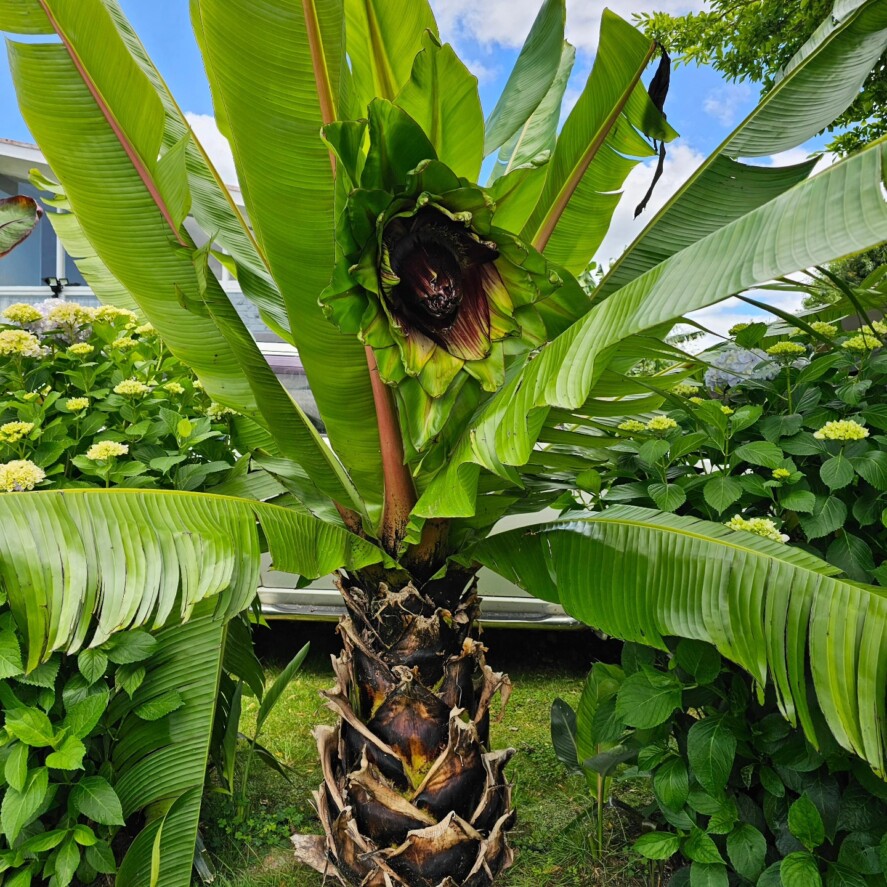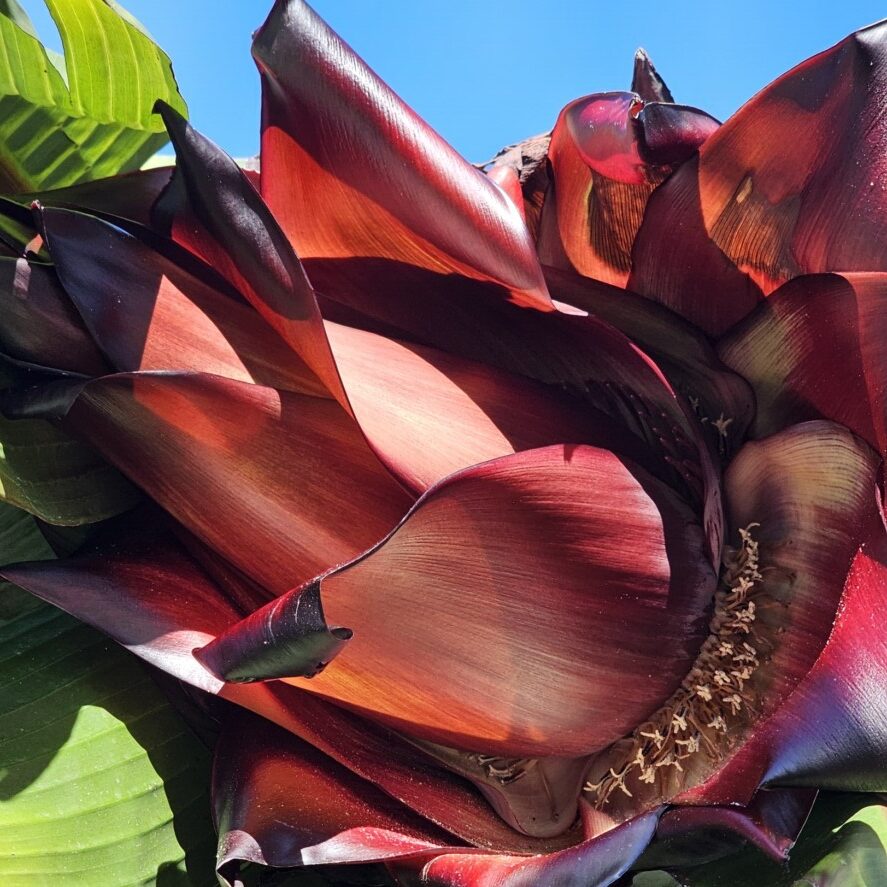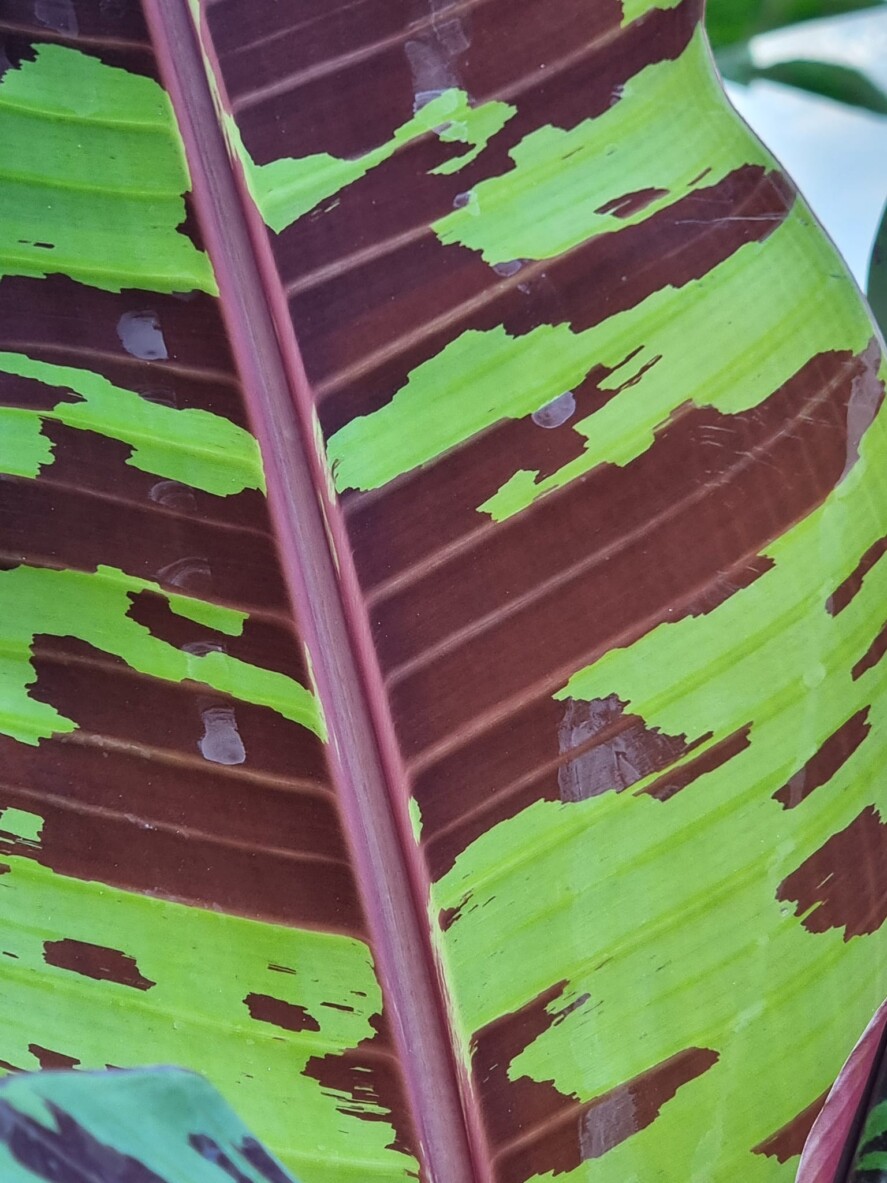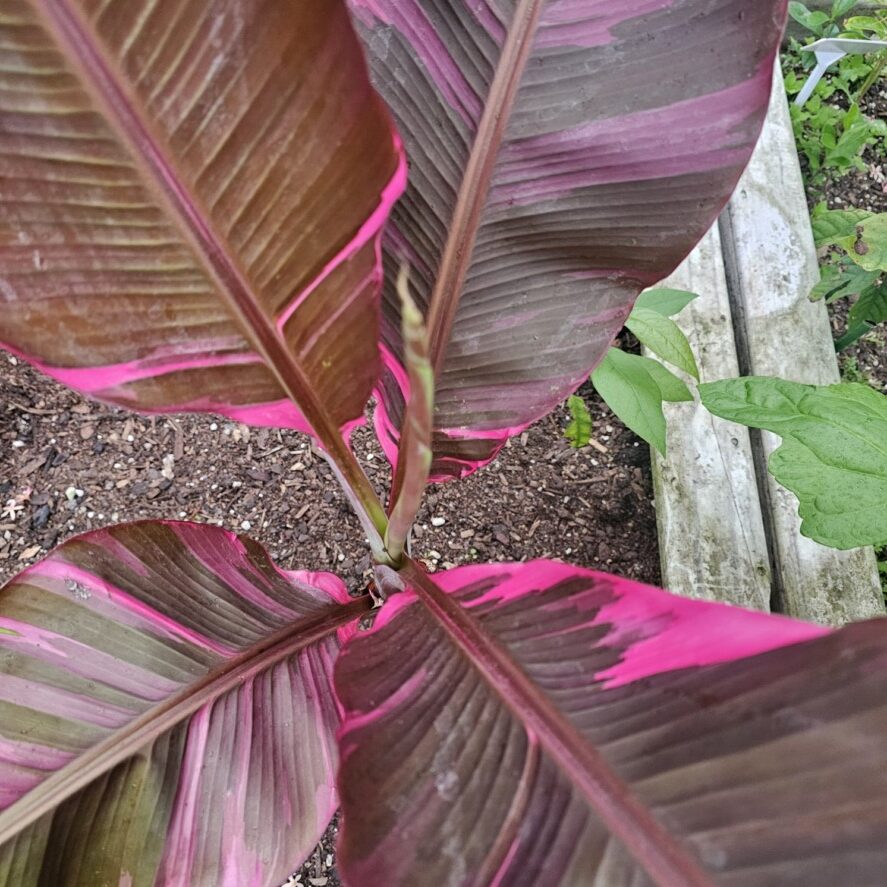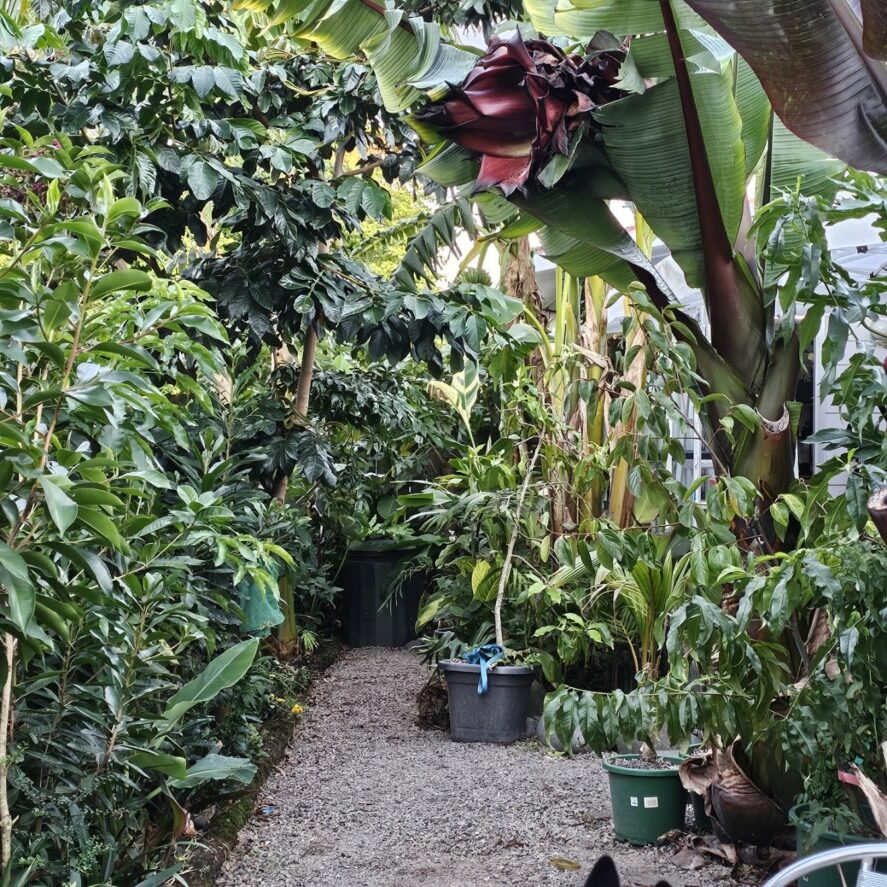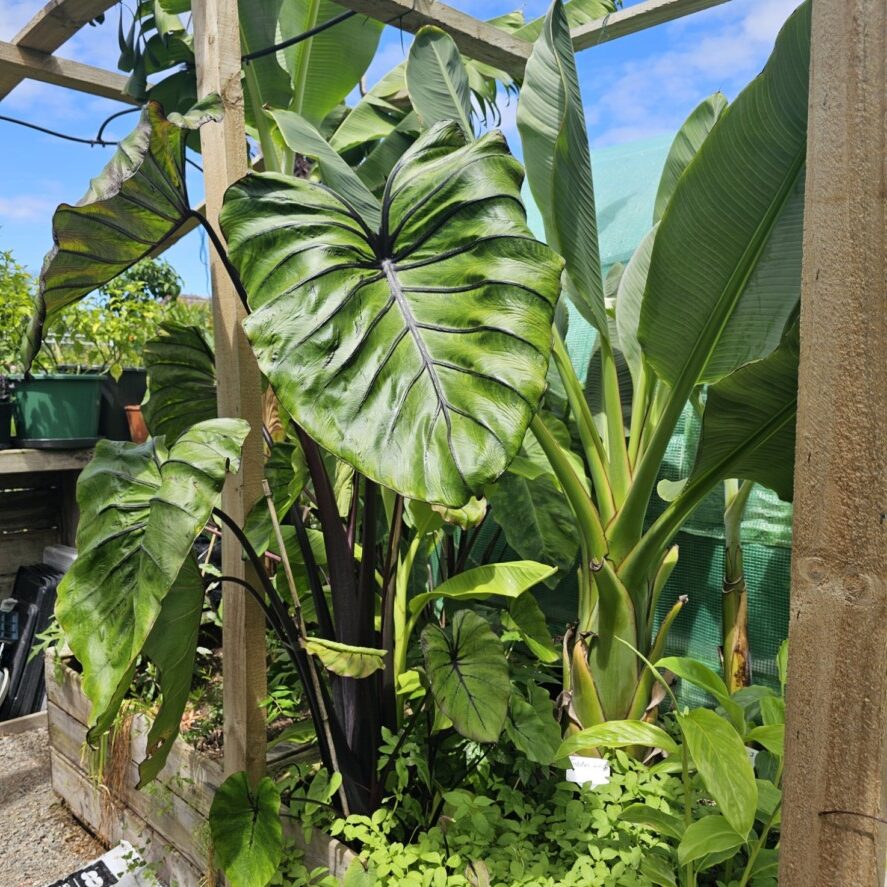-
Troppo Plant & Garden Articles
- Te Puke Region
- TROPPO’s Food Forest in Te Puke, BOP (www,foodforest.org.nz)
- Troppo’s Plant Collection
- TROPPO's Nursery Directory
- Food Forests of New Zealand (www.foodforests.nz)
- Nursery Map - Plant Suppliers of NZ Directory (www.nurserymap.nz)
- Kids Garden Corner
- New Zealand Garden Bird Survey
- New Zealand Garden Groups
- Delicious Recipes
Acacia – The Versatile and Resilient Tree for Every Tropical Garden
Just imagine transforming your tropical garden with the addition of an acacia tree; it offers both aesthetic appeal and practical benefits. With their fast growth, drought resistance, and ability to improve soil health through nitrogen fixation, acacia trees are a fantastic choice for your landscape. These hardy trees not only provide shade and beauty but also serve as a refuge for wildlife. In this post, you’ll discover how to incorporate acacia into your garden, along with tips for care and maintenance to ensure that your landscape flourishes.
Botanical Description and Natural Habitat
For those looking to cultivate a resilient tree in their tropical garden, Acacia presents an adaptable choice. This genus comprises over 1,300 species, ranging from trees to shrubs, each thriving in diverse climates. You will find Acacia naturally occurring in varied habitats, from arid regions to lush rainforests, showcasing its remarkable ability to withstand different environmental conditions.
Physical Characteristics
Any Acacia tree exhibits a unique appearance, characterized by feathery, fern-like leaves and often striking clusters of bright yellow or white flowers. These trees can reach heights of up to 65 feet, giving your garden vertical appeal. Their bark ranges from smooth to rough, depending on the species, while some have thorns, adding an element of intrigue and deterrence.
Geographic Distribution
Physical distinctions of Acacia allow it to thrive in several regions, particularly across Australia, Africa, and parts of South America. You will see these trees adapt to a broad range of soils, from sandy to clayey, making them versatile in various tropical gardens.
Due to the Acacia’s vast adaptability, it spans across diverse geographic regions and habitats. You will find these trees primarily in Australia, which is home to more than 1,000 species, as well as in Africa, where they play a significant role in local ecosystems. Their ability to grow in harsh environments enables you to integrate Acacia into your garden design, providing both beauty and ecological benefits, such as improved soil quality and increased biodiversity.
Species Diversity and Selection
Some of the many species of acacia boast unique characteristics that allow you to select the perfect tree for your tropical garden. Each acacia variety varies in size, shape, and flowering patterns, making it necessary to understand their specific needs and ecological benefits. When choosing an acacia species, consider factors such as soil type, space availability, and desired aesthetic appeal, ensuring that your garden thrives with this versatile tree.
Popular Ornamental Varieties
At the forefront of ornamental selections are Acacia dealbata, known for its vibrant yellow blooms, and Acacia senegal, which offers glossy foliage and resilience. These iconic varieties not only enhance the visual appeal of your garden but also provide a myriad of ecological benefits, such as enhanced soil fertility and attracting pollinators.
Climate-Specific Recommendations
Above all, it is necessary to match the acacia species you choose with your local climate conditions for optimal growth and health.
Understanding your climate is vital when selecting acacia species to ensure successful cultivation. Tropical regions generally support a wider variety of acacia, including those that thrive in hot and humid conditions. Choose drought-resistant species if you’re in an area with dry spells, such as Acacia tortilis, while more moisture-loving varieties, like Acacia mangium, are better suited for regions with abundant rainfall. Additionally, some species may offer enhanced resistance to local pests and diseases, further enriching your garden while promoting sustainability.
Growing Requirements
There’s a lot to consider when cultivating Acacia in your tropical garden. This adaptable tree flourishes in diverse conditions, making it a fantastic addition. By understanding its specific needs, you can ensure healthy growth and remarkable beauty throughout your landscape.
Soil and Water Needs
At the heart of Acacia’s success is well-draining soil that maintains a balance between moisture and aeration. You should aim for slightly acidic to neutral pH levels, which will enhance nutrient availability.
| Soil Type: | Well-drained, sandy or loamy soil |
| Watering: | Moderate; allow soil to dry between watering |
Light and Temperature Conditions
Needs a sunny location with plenty of light to grow vigorously. This tree is highly tolerant of heat and can withstand a variety of temperature ranges, but you should protect it from frost and extreme cold.
| Light: | Full sun is optimal |
| Temperature Range: | 15°C to 35°C (59°F to 95°F) |
Further details on light and temperature indicate that this tree thrives in temperatures above 20°C (68°F) for optimal growth. If you’re in a region with colder winters, it’s imperative to position your Acacia in a location that receives maximum sunlight exposure to promote vitality. Avoid planting in shaded areas, as insufficient light can lead to stunted growth or increased vulnerability to pests and diseases.
| Sunlight Exposure: | Full exposure enhances growth |
| Cold Tolerance: | Sensitive to frost; protect as needed |
Landscape Applications
After considering the myriad of options for your tropical garden, Acacia stands out as a flexible choice for diverse landscape applications. Its stunning foliage, vibrant blossoms, and adaptability make it an asset whether you envision a shaded retreat, a focal point, or a natural privacy screen. With various species suitable for different soil types and preferences, Acacia can transform your outdoor space into a thriving ecosystem that enhances aesthetic appeal while providing practical benefits.
Garden Design Integration
Across your garden, integrating Acacia can seamlessly blend with existing flora, creating a harmonious environment. The tree’s unique form and texture allow it to fit beautifully amidst flowering plants and shrubs. By strategically placing Acacia in your landscape, you enhance the garden’s layered appearance, while also attracting beneficial wildlife such as pollinators and birds, all contributing to a lush and lively atmosphere.
Urban Planning Benefits
One of the standout features of Acacia in urban environments is its ability to improve air quality and reduce urban heat. With their robust nature and drought resistance, they make excellent choices for sustainable landscapes. Furthermore, Acacia trees contribute to biodiversity, providing habitats for various species even in bustling city areas.
Understanding the urban planning benefits of Acacia helps you appreciate its role in sustainable city landscapes. By planting Acacia, you can help mitigate air pollution, reduce heat island effect, and increase overall urban biodiversity. These trees are not only aesthetically pleasing but also functional, absorbing carbon emissions and releasing oxygen. Their long-lasting durability means low maintenance is required, making them a perfect addition to any urban garden or public space. Investing in Acacia can transform your environment, promoting a healthier, greener urban ecosystem.
Maintenance and Care
Unlike many other trees, Acacia requires relatively low maintenance, making it an excellent choice for busy gardeners. Regular watering during its initial years will help establish a strong root system. Once acclimated, the tree is drought-resistant, needing minimal irrigation. Providing a balanced fertilizer in the growing season will enhance its vigor and promote lush foliage. Be sure to monitor the tree for any signs of stress or nutrient deficiency, ensuring your Acacia thrives in your tropical garden.
Pruning and Training
After establishing your Acacia, regular pruning will help maintain its shape and encourage healthy growth. You should remove any dead or crossing branches to promote better air circulation and sunlight penetration. Pruning should be done during the dry season to minimize the risk of disease. With careful training, your Acacia can grow into a beautiful specimen that complements your tropical landscape.
Disease and Pest Management
Pest management is crucial to keeping your Acacia healthy and vigorous. Regularly inspect your tree for common pests such as aphids and borers, which can weaken the plant and lead to disease. Applying neem oil or insecticidal soap can effectively combat these pests without harming beneficial insects. Make sure to address any signs of fungal infections or leaf spots promptly by removing infected foliage and applying a suitable fungicide.
This tree can face challenges from various diseases and pests, so vigilance is key. Watch for aphids, which can cause leaf curling and weaken your Acacia. Additionally, fungal infections may manifest as leaf spots or blight, requiring immediate removal of infected parts and treatment with a fungicide. Employing integrated pest management practices allows you to maintain a healthy Acacia while safeguarding your tropical garden’s ecosystem.
Environmental Benefits
Your tropical garden can greatly benefit from the presence of Acacia trees, which offer numerous environmental advantages. These trees improve air quality by absorbing carbon dioxide and releasing oxygen, while their deep root systems help stabilize soil, thus preventing erosion. Additionally, Acacias provide shade and moisture retention, contributing to a more sustainable garden ecosystem.
Soil Improvement and Erosion Control
Across your garden, Acacia trees play a vital role in enhancing soil health and preventing erosion. Their extensive root systems anchor the soil, reducing the risk of landslides and maintaining soil structure. Furthermore, as they shed leaves and branches, they enrich the soil with organic matter, improving nutrient content and encouraging robust plant growth.
Wildlife Support and Biodiversity
Wildlife thrives in ecosystems enriched by Acacia trees due to their ability to provide food and habitat. These trees attract various pollinators, including bees and butterflies, which are important for maintaining biodiversity in your garden. Additionally, Acacia species serve as host plants for certain beneficial insects and provide shelter for various birds.
In fact, Acacia trees are home to a plethora of life, making them a vital addition to your tropical garden. They produce nectar-rich flowers that attract bees, butterflies, and other pollinators, promoting healthy ecosystems. Moreover, the dense foliage offers habitat for birds and small mammals, enhancing your garden’s biodiversity. By cultivating Acacia, you contribute to a thriving natural habitat, ensuring your garden is not only aesthetically pleasing but also a refuge for local wildlife.
Final Words
Drawing together the attributes of the Acacia tree, you can see why it is an invaluable addition to your tropical garden. Its adaptability to various soil conditions, drought resistance, and aesthetic appeal make it a perfect fit for your landscape. With the plus of attracting wildlife and enriching your soil, incorporating Acacia not only enhances your garden’s beauty but also contributes to a vibrant ecosystem. By choosing this resilient tree, you are ensuring a flourishing and sustainable outdoor space for years to come.

